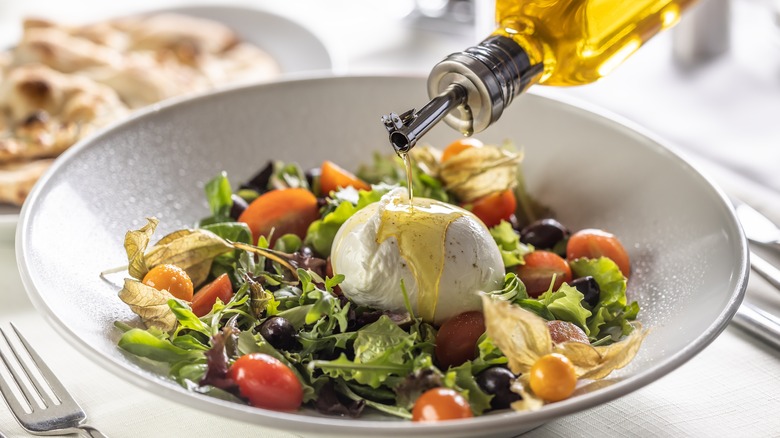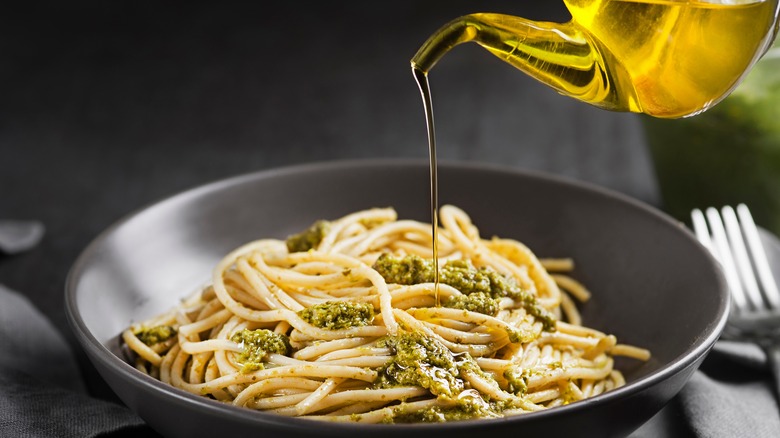How Much Olive Oil Is Considered A 'Drizzle'
If you love olive oil, you've certainly seen a recipe exhorting you to drizzle some in a pan, or drizzle over a finished dish to add shine and flavor. Words like these are intended to engage the cook in being actively involved in the process, not simply follow a measuring-spoon direction. If my pan is a larger diameter than yours, my drizzle will likely have more oil than yours if we're trying to cover the bottom. And whether you've got a small salad or a large, whole roasted branzino, or sheet of focaccia dough, that drizzle amount should necessarily differ too.
Outside the kitchen, drizzle is rain that dampens everything with a light and misty coating — a good mental image for when you try drizzling. Your olive oil drizzle should be just enough to moisten what you're applying it to. That could be a half teaspoon on a few tomatoes, or up to several tablespoons depending on your use. If the recipe asks you to use a generous drizzle, you might want to aim for some puddles of oil as well.
Get out of the weeds and into the flow with your drizzle
We don't encourage you to break out your measuring spoons when drizzling. Learning to become an intuitive cook is a stepwise process that requires fine-tuning, and getting hands-on clues to the meaning of drizzle can be useful. One clue comes from the kind of pour spout you'll find on artisan finishing oils. Tasting Table ranked a set of finishing olive oils and the bottle openings are mostly narrow, restricting the pour to a thin stream. And of course, we've learned how to hack the openings that pour too much, too. You can also put your thumb over the end of an olive oil bottle to control the flow.
When a recipe calls for a squeeze of lemon or a sprinkle of salt, there's a reason the recipe writer hasn't given you a better estimate. You're intended to use some judgment — would you enjoy more olive oil on the plate to wipe up with a slice of bread? Then drizzle heavily. The finished flavor is also an important consideration. Lightly flavored lettuces or an unexpected sweet fruit pairing with olive oil could be overwhelmed by strong, grassy extra-virgin varieties, so a light drizzle simply adds welcome pepperiness. On the contrary, too little oil drizzled on a roasted chicken or relatively plain pasta can leave your plate dry and dull. So don't obsess on the measurement — lean into your personal taste and creativity, and enjoy the drizzling process.

